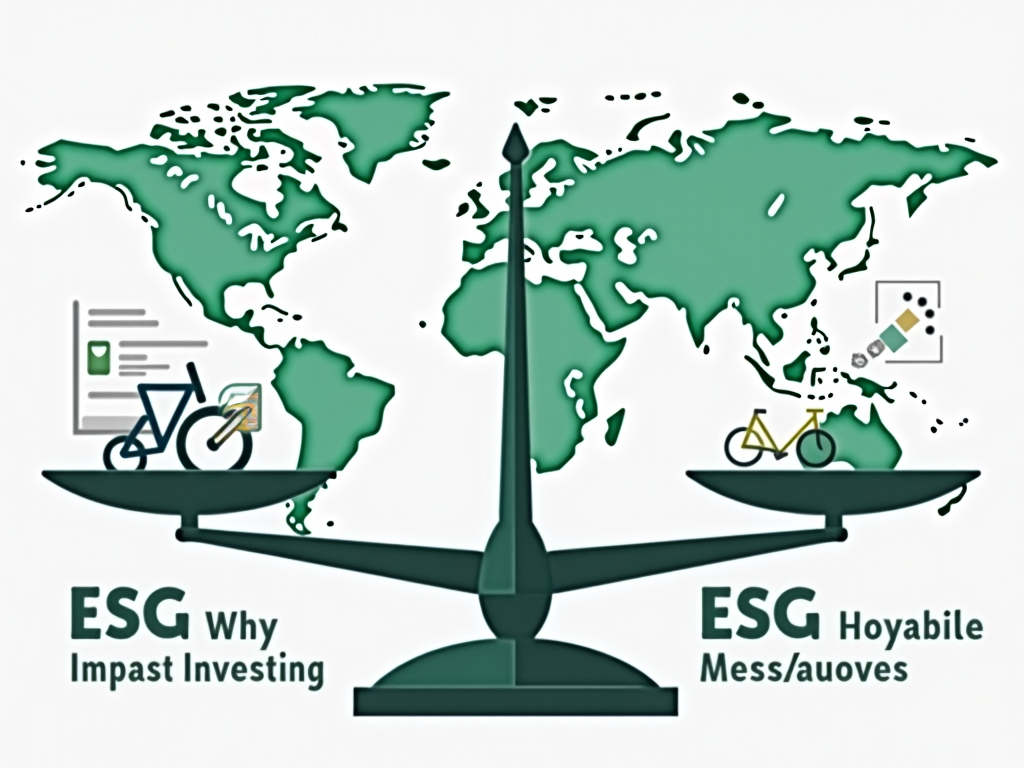Impact investments and ESG investments are two of the most popular strategies in the field of sustainable investing. Both aim to generate positive social and environmental effects, but they differ in their approach to measurability and social impact. While impact investments pursue clearly measurable objectives, ESG investments focus on supporting companies with sustainable practices. These differences influence how investors structure their portfolios and what priorities they set.
Shared Measurability in Impact and ESG Investments: A Long Road to Unity

Measurability is at the core of both impact investments and ESG investments, with the ambition to make the success of investments visible and understandable. Both approaches strive to promote transparency in reporting and ensure that investments actually have the desired social and environmental effects. However, the methods for achieving this measurability take different paths.
The Importance of Measurability
In the realm of impact investments, the ability to measure is fundamental. Investors set defined social and environmental goals from the outset that they intend to achieve through their financial commitments. These are often concrete and quantifiable objectives that allow tracking the actual contribution of investments to solving specific social challenges. The peculiarity is that investors do not rely solely on feedback from companies but actively participate in measuring impact.
On the other hand, measurability in ESG investments provides an overview of the sustainability performance of companies. Here, ESG ratings dominate, which are assigned based on a series of criteria such as environmental impact, social responsibility, and corporate governance. These ratings are often intuitive to interpret, but the indirect nature of this approach can make direct monitoring of specific social or environmental effects difficult.
Measurement Methods
Impact investments require a rigorous methodology that includes the clear definition of objectives. Investors use standardized indicators to measure progress and evaluate the effectiveness of measures. Through continuous monitoring and the regular publication of reports, investors create a cycle of transparency and accountability.
In contrast, ESG investments rely on ESG ratings and regulatory-based screening, offering a broader, although less focused, approach. By evaluating companies based on compliance with international standards and guidelines, investors can structure their portfolios with lower risks while signaling that they prioritize sustainability. Key Performance Indicators (KPIs) support this process by highlighting specific aspects of ESG performance.
Progress in this domain requires improving the quality of data and developing standardized measurement methodologies to bridge the gap between the innovative approaches of impact investments and the established methods of ESG investments, which could ultimately promote greater consistency between the approaches.
Objectives and Social Significance: Impact Investments Compared to ESG

Impact investments and ESG investments offer two complementary but distinct pathways to generate positive social and environmental effects while also delivering financial returns. Both approaches reflect the growing trend of making investments sustainable, but they differ in their objectives and approach.
Impact investments stand out for their direct focus on specific social or environmental outcomes compared to ESG investments. Investors in impact investing aim to support projects or companies whose primary focus is on creating measurable positive effects. This impact often extends beyond immediate financial returns and is seen as an integral part of the investment process. For instance, organizations like Oikocredit invest in local partners that promote inclusive finance, sustainable agriculture, and renewable energy. Such activities improve the living conditions of low-income individuals and serve as a model for impact-oriented financing.
ESG investments, which take environmental, social, and governance criteria into account, emphasize promoting sustainable practices within existing companies. This commitment often leads to indirect social and environmental benefits as investors prefer companies that stand out for exceptional sustainable practices. Strategies such as exclusion and engagement are common tools used by ESG investors to seek to influence change. In these strategies, they avoid investing in companies involved in controversial sectors and instead promote those committed to sustainability and social justice.
The central difference in the objectives of these two approaches therefore lies in the degree of focus on outcomes and methodology: while impact investments aim for direct and measurable effects in society and the environment, ESG investments concentrate on compliance with standards and the promotion of sustainable practices. Both methods support sustainable and socially responsible development, but with varying strategies and intensities. Impact investments can be seen as a cutting-edge approach that leverages financial resources to address specific challenges, while ESG investments utilize the breadth of their investments to provide positive impulses through broad changes within existing structures.